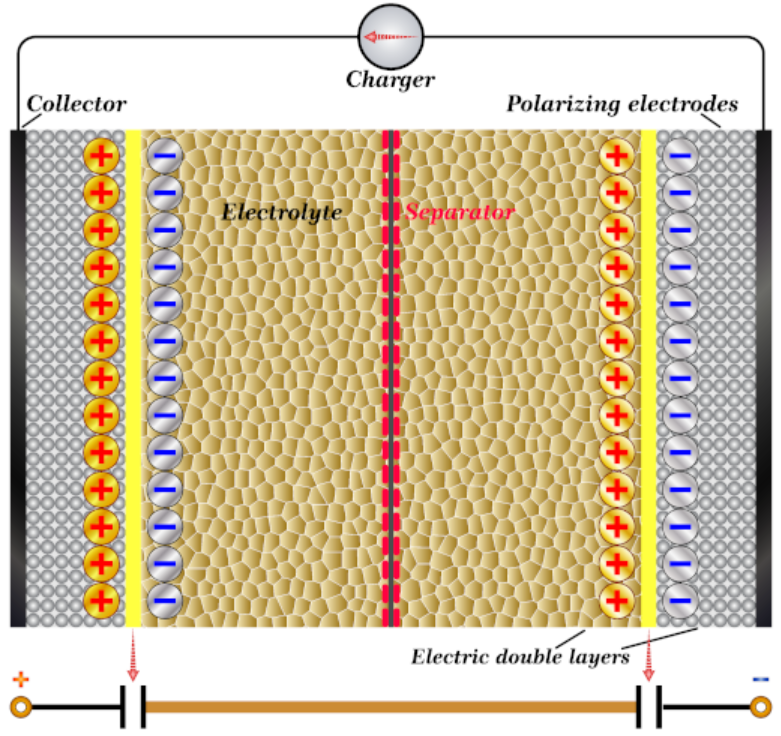Supercapacitors: Fast Charge and Discharge?
Supercapacitors differ from batteries mainly due to their fast charge and discharge. We, at ZTT Supercapacitor, often receive requests regarding supercapacitors from various areas and countries. However, it seems there is some misunderstanding between supercapacitors and lithium batteries.

What is a Supercapacitor?
Supercapacitors are also sometimes known as supercaps, ultracapacitors, or electric double-layer capacitors. In short, they have higher capacitance and lower voltage limits than other types of capacitors. While functionally, they lie somewhere in between electrolytic capacitors and rechargeable batteries.

(Cutaway diagram of the supercapacitor)
In terms of power storage, there is some common confusion. First of all, we can simply talk about fast charging and discharging.
Fast Charge and Discharge
The charge time of a supercapacitor is 1–10 seconds. The initial charge can be made very fast, and the topping charge will take extra time.
Here, we list some comparison items among Lead-acid batteries, Supercapacitors, and Lithium-ion batteries.
| Items | Lead-acid Battery | Supercapacitor | Lithium-ion Battery |
|---|---|---|---|
| Volume | Moderate size (compared with the other two) |
Largest | Smaller than lead-acid batteries and supercapacitors |
| Weight (under the same storage capacity) |
Heavy | Moderate, about half of the lead-acid battery | Lighter than supercapacitors |
| Charging Method | The whole group is charged in series | The whole group is charged in series | The whole group is charged in series |
| Nominal Voltage of Cell | <2V | 2.7~3.0V | 3.6V |
| Temperature | Working temperature range from -25°C to +45°C (optimal at 25°C) | Working temperature ranges from -40℃ to +70℃ | Working temperature range from -20℃ to +60℃ Built-in heater |
| Charge and Discharge Time | Cycle full charge for 10 hours | Can be fully charged in tens of seconds | Cycle full charge for 1-6 hours |
| Power Density | Low, 20-200W/kg | Higher, 1000-20000W/kg | High, 320W/kg |
| Energy Density | High, about 35Wh/kg | About 1/10 of the battery, 3-15Wh/kg | High, about 4-5 times that of the battery, 190Wh/kg |
| Cycle Life | 1.5 years (high-rate charge and discharge or over-discharge points have a greater impact on life) |
8-10 years | 3-5 years |
| Charge Retention | Low self-discharge | Large leakage current | Low self-discharge |
| Maintenance | The battery is sealed and maintenance-free and can be replaced when it expires | Completely maintenance-free | Maintenance-free |
Conclusion
The main difference is a supercapacitor’s ability to store energy doesn’t come from chemical reactions. But rather from the way that its physical design allows it to hold negative and positive charges apart. This makes supercapacitors very fast at charging and discharging, much faster than batteries.
> Feel free also to contact us for more information: sales@zttsupercap.com
> Keep yourself up-to-date on Supercapacitors News, Trends, Applications, and more with our LinkedIn Page.
> For more information about our Supercapacitors, also visit our product page.
Related news
2023-07-05







No. 5 Zhongtian Road, Nantong Economic & Development Zone, Jiangsu Province, China
© Copyright 2024. Zhongtian Supercapacitor Technology Co., Ltd.. All rights reserved.

